Sony VPL-XW7000ES Review
A super-bright 4K laser beamer with excellent HDR tone mapping
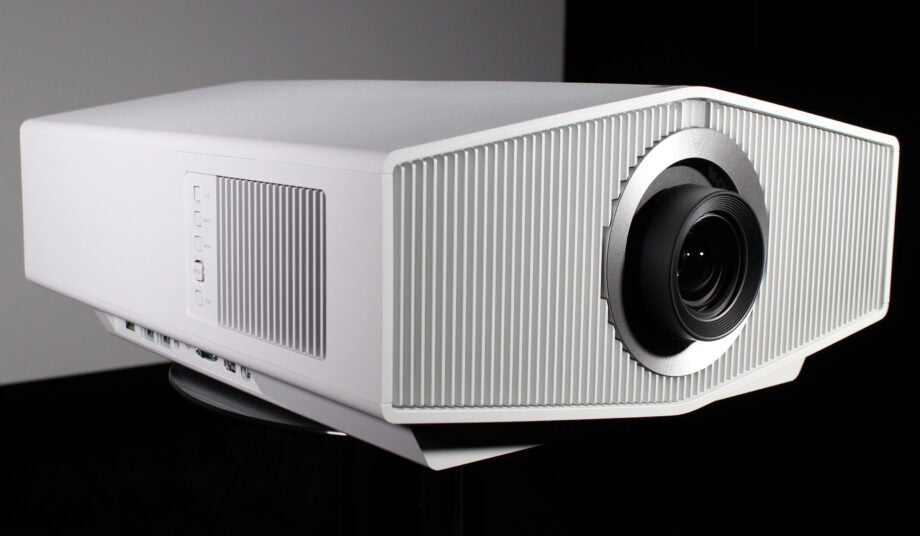

Verdict
This high-end beamer delivers incredibly bright and pin-sharp 4K pictures that will light up the biggest projection screens. Accurate HDR tone mapping, class-leading image processing, and silky smooth motion also impress, making this a great choice for the well-heeled cinephile.
Pros
- Incredibly bright images
- Impressive HDR performance
- Superb image processing
- Peerless motion handling
Cons
- Black levels could be better
- No HDMI 2.1 inputs
Availability
- UKRRP: £14999
- USARRP: $27999
- AustraliaRRP: AU$25499
Key Features
- Native 4KUltra HD 4K (3840 x 2160) SXRD chipset
- Laser light sourceLaser phosphor with a claimed brightness of 3,200 lumens and a lifespan of 20,000 hours
- X1 Ultimate ProcessorSony’s lates test chipset promises advanced image processing and optimisation for projectors
- Advanced Crisp Focus lensThis superior lens technology resolves fine detail, along with an increased amount of zoom and a wider throw ratio
Introduction
The Sony VPL-XW7000ES is on of the latest additions to the company’s line-up of native 4K projectors, all of which now use a phosphor laser light source, the X1 Ultimate for Projector processor, Dynamic HDR Enhancements, and Motionflow frame interpolation technology.
Since the XW7000ES is the high-end model, it also has a claimed brightness that reaches a retina-burning 3,200 lumens, plus motorised lens controls and memories, Sony’s Advanced Crisp Focus (ACF) lens, and support for 3D. Sadly there are no HDMI 2.1 inputs.
If your budget is more constrained you could also take a look at the VPL-XW5000ES, although this model drops a number of key features, but how does the XW7000 compare to its cheaper sibling, not to mention its direct competitors the JVC DLA-NZ7 and DLA-NZ8?
Design
- Advanced Crisp Focus lens
- Motorised lens controls
- Choice of black or white
- Backlit remote control
The Sony VPL-XW7000ES looks identical to the XW5000ES, with the same angled design, and centrally-mounted lens. There are air intake grilles across the entire front, exhaust vents at the rear, and some basic controls on the left hand side as you face the lens.
The XW7000ES is slightly larger at 460 x 210 x 517mm (WxHxD), and weighs more at 14kg, but offers the same choice of matte black or matte white. The build quality is also similar, which is disappointing considering it’s more than twice the price of the XW5000.
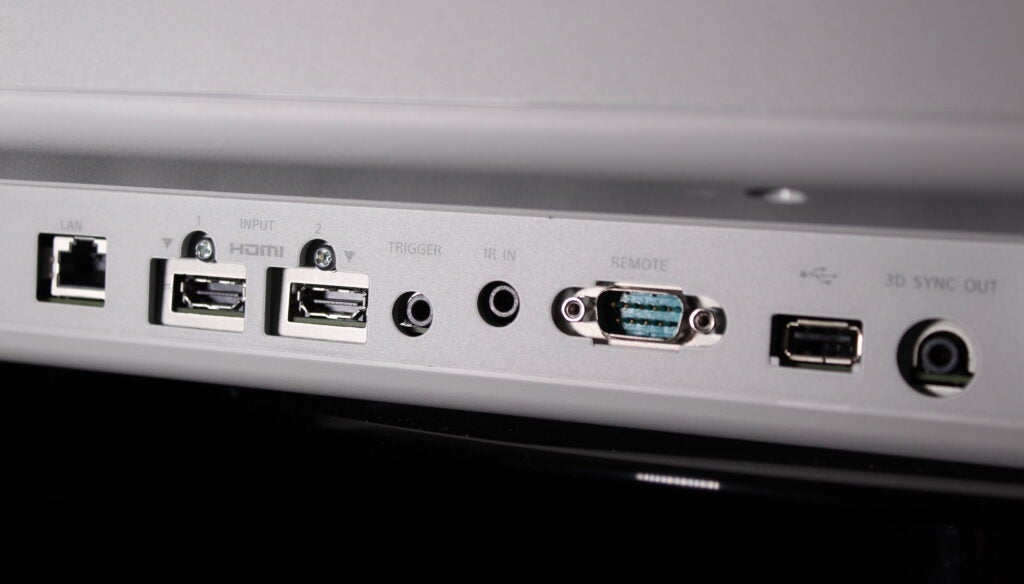
One area where the two differ is the lens assembly, with the XW7000 using an Advanced Crisp Focus (ACF) lens, which resolves more detail. The lens controls are also motorised, making setup easier, and there are lens memories to create different settings for narrower aspect ratios – handy if you have a 2.35:1 screen.
The connections are located in a recess below the side controls, and just like the XW5000ES you’ll find two HDMI 2.0b inputs, an Ethernet port and RS-232C connector, a 12V trigger, an IR input jack, and a USB port for power. Unlike the cheaper model, there’s also a 3.5mm 3D Sync Out jack for connecting an external 3D emitter.
While the lack of HDMI 2.1 inputs may be understandable on the more affordable XW5000, it’s very disappointing on the higher end model, and their absence means the XW7000ES can’t handle 4K 120Hz or HDR10+. The JVC projectors not only have HDMI 2.1 inputs, but also support both features.
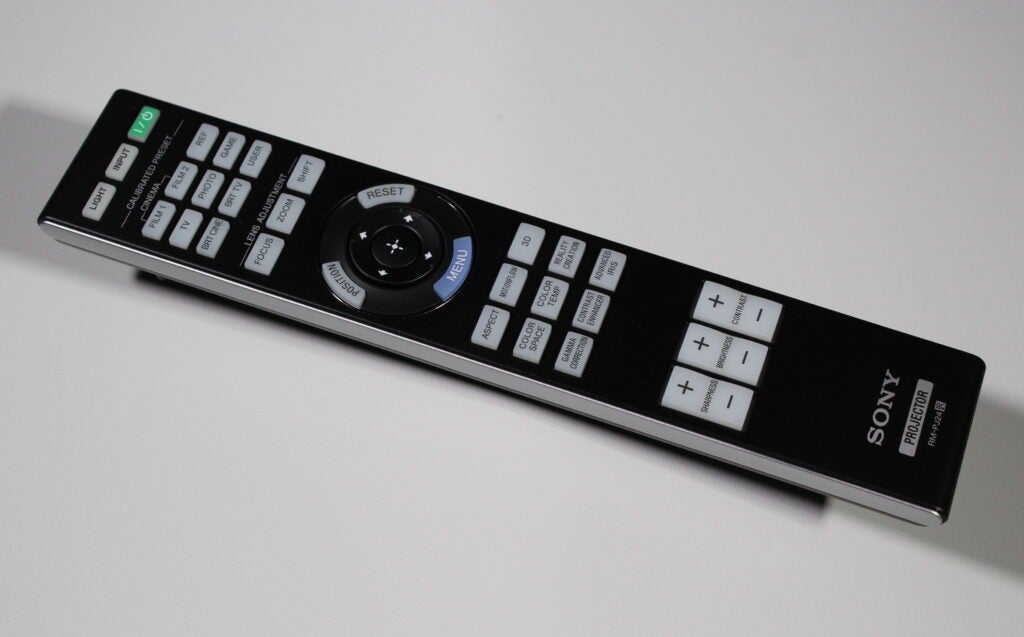
The remote is the same large and backlit zapper included with the XW5000, but with a couple of extra controls related lens memory and 3D. Once again the buttons are laid out in a sensible fashion, the remote is comfortable to hold and use with one hand, and includes all the controls you’ll need to setup and operate the XW7000.
Features
- Phosphor laser light source
- 4K (3840 x 2160) SXRD chipset
- X1 Ultimate processor
- Dynamic HDR Enhancer
- IMAX Enhanced
The Sony VPL-XW7000ES uses exactly the same 0.61-inch SXRD chipset as the XW5000ES, which delivers native 4K (3840 x 2160) images. The projector also has a refresh rate of 120Hz, although thanks to the lack of HDMI 2.1 inputs this higher frame rate only applies to resolutions up to 2K (1920 x 1080).
The peak luminance of the laser phosphor light source hits a whopping 3,200 lumens, making it is considerably brighter than its cheaper sibling. An output this blinding means the XW7000 can light up seriously large screens without a noticeable drop in performance, as well as deliver HDR with better highlights and image brightness.
It also makes this beamer ideal for less-than-ideal rooms with white walls or big windows, although the darker you can make the environment the better your experience will be. The claimed lifespan is up to 20,000 hours, which essentially means you can enjoy a decade of film watching without having to worry about changing a lamp.
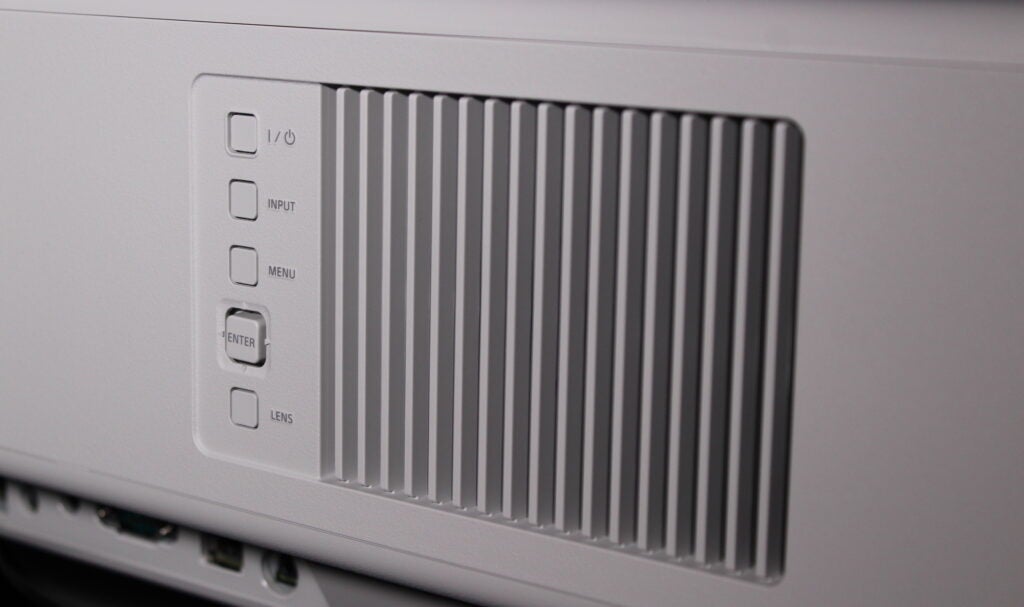
The wide dynamic range optics and Triluminos Pro algorithm promise deeper blacks, more saturated colours and improved contrast ratios. In addition, Sony’s X1 Ultimate processor has been optimised for projectors, bringing its advanced upscaling and peerless image processing to this beamer’s big screen pictures.
There’s also object-based HDR remastering and dynamic HDR enhancement, with support for HDR10, HLG, and even IMAX Enhanced content. Although as already mentioned, the lack of any HDMI 2.1 inputs precludes support for HDR10+ and the benefits of its dynamic metadata.
There’s Motionflow frame interpolation for fast-paced sports action, and a low-latency game mode for a reduced input lag. In the case of the latter, I measured lag at 2K/60 at 28ms, but this drops to 20ms with 4K/60, and goes as low as 12ms with 2K/120. Although regardless of source, these response times are incredibly fast for a projector.
Unlike the XW5000, the Sony VPL-XW7000ES supports 3D but there’s no built-in emitter, so you’ll need to buy a compatible third-party emitter and connect it to the 3.5mm 3D Sync Out jack. The good news is that once you’ve got an emitter and glasses, the incredible brightness delivers fantastic 3D with no crosstalk.
Performance
- Super-bright big screen pictures
- Best-in-class image processing
- Excellent HDR tone mapping
- Incredibly fluid motion handling
- Very low input lag
The Sony VPL-XW7000ES is bright, really bright. The claimed peak luminance of 3,200 lumens is no idle boast, and not only means this projector can light-up really big screens, but also means it can deliver very punchy HDR highlights. Of course, the brighter a projector, the harder it is to retain really deep blacks, and so it proves here.
Sony claims the XW7000 has a contrast ratio of infinity to one, but this measurement can only be achieved by turning the laser light off, so unless you spend all your time looking at a black screen it doesn’t represent actual viewing material. In reality, the contrast ratio is closer to 30,000:1, which is better than the XW5000ES, but less than half that of the JVC NZ8. The black levels certainly don’t reach the inky depths of the latter either.
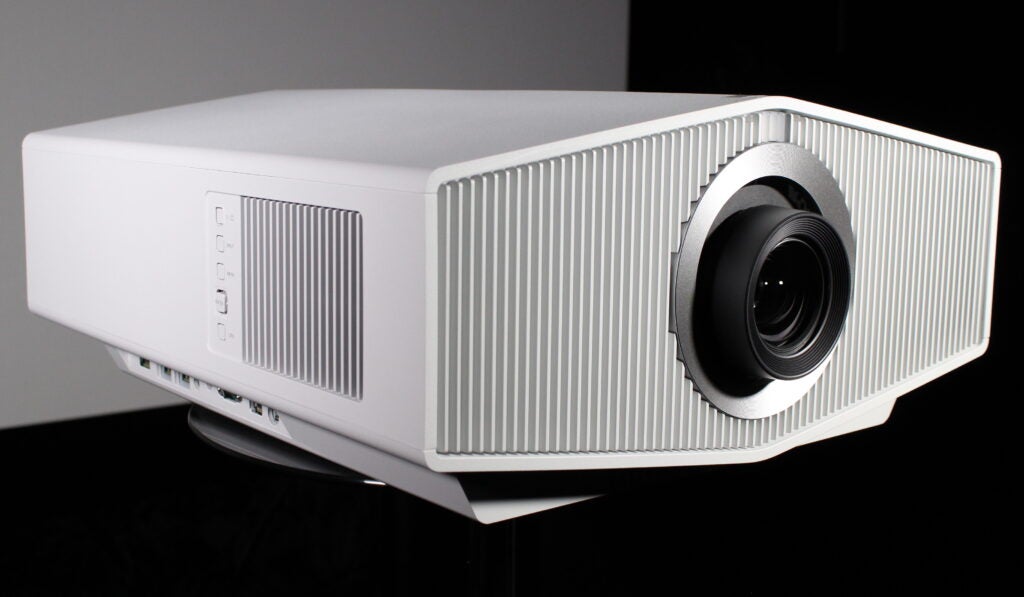
The combination of the native 4K (3840 x 2160) chipset and Sony’s Advanced Crisp-Focused (ACF) lens results in wonderfully detailed and distortion-free images, along with wider dynamic range optics that help boost the HDR performance. Once you add in Sony’s peerless processing wizardry, you get exceptional levels of definition that will have you convinced that an upscaled high quality 1080p source looks more like 4K.
I found the Reference picture mode proves very accurate out of the box, and the extensive calibration controls can be used to dial in a near-perfect picture. If you feel you need a bit more punch you could use the Bright Cinema picture mode, but it’s not as accurate, resulting in bluer whites and over-saturated colours. It’s pleasing to see that in both SDR and HDR, the Reference mode lives up to its name by matching the industry standards for both formats.
You can change the laser brightness to suit your screen, but unless it’s a whopper, or your room has white walls, you’ll probably need to dial it down a tad. This will also help with the perceived black levels and contrast ratio, although the Dynamic Control can also be used to adjust the contrast performance, but at the expense of some shadow detail.
Sony’s Reality Creation detail enhancement applies sharpening to any resolution, including 4K, but is so sophisticated that it achieves this without introducing distracting artefacts. Motion handling is class-leading, appearing fluid and free of judder or other issues, even without engaging Motionflow. Although for fast sports the frame interpolation feature can be beneficial.
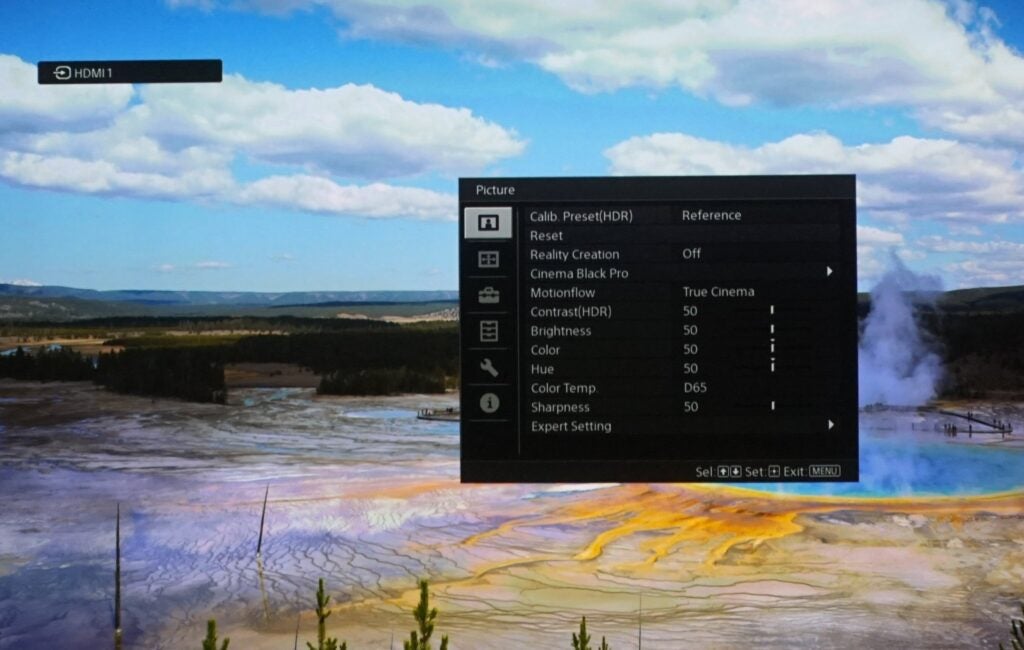
All these skills are brought to bear when watching Avatar on Blu-ray, and the Sony does a fantastic job of upscaling the image and squeezing every pixel of detail out of the CGI landscapes. The scene where Jake and Neytiri fly together is rendered with silky smooth movement as they soar through the sky, and the True Cinema setting is especially effective at doubling the 24p frame rate to eliminate judder without introducing artefacts.
When it comes to HDR, and specifically tone mapping, Sony’s Dynamic HDR Enhancer is designed to change the contrast and laser brightness depending on the overall content. However, this isn’t dynamically adjusting the tone mapping on a frame-by-frame basis like the JVC projectors, and as a result the latter offer a more subtle and nuanced HDR experience, with crisper highlights and expanded shadow detail.
You can try to tweak the XW7000ES’s HDR performance by changing the Dynamic HDR Enhance setting, as well as lower the laser brightness to improve the black levels. However, doing the latter means the Sony loses its brightness advantage over the 2,500 Lumens produced by JVC NZ8. The dynamic laser setting can also help, but like the JVC you will occasionally see this dimming feature at work.
Watching Top Gun: Maverick in HDR perfectly demonstrates the strengths of the Sony, with scorching desert sands, and sunlight glinting off the aircraft canopies. The images almost leap off the screen, and the visceral sense of realism is overwhelming. At the other end of scale, the shift to night in 1917 starts with an almost black scene before being illuminated by falling flares. The Sony VPL-XW7000ES really gives those flares a luminance burst, but struggles to render all the shadow details hidden in the darkness.
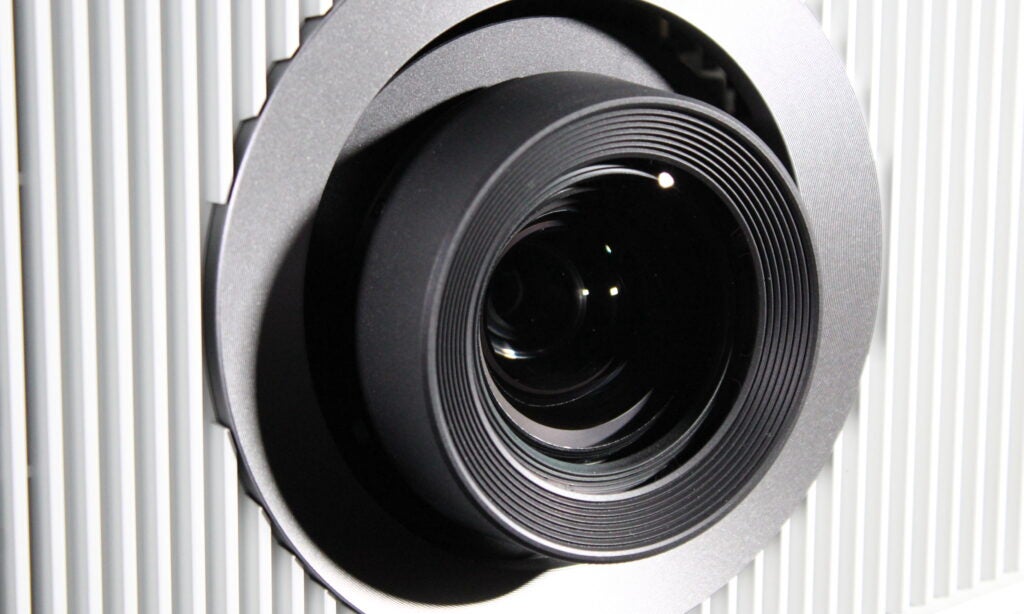
It’s a shame there’s no support 4K 120 high-frame-rate gaming, because in all other respects this an excellent (if expensive) projector for gamers. Thanks to its bright and detailed images, as well as its peerless motion handling, the performance with SDR is superb, while HDR gaming is often exceptional due to the laser light source and HDR enhancements. The overall gaming experience is smooth and responsive in the dedicated game mode, and the long laser life means you never have to worry about the image dimming due to marathon gaming sessions.
Ultimately, if you have sufficient funds the XW7000ES delivers significant improvements over the cheaper XW5000ES, helping to justify the price premium. The image is sharper thanks to a superior lens, and significantly brighter, which results in a punchier HDR experience. The processing and motion handling remain state-of-the-art, while the addition of 3D support, motorised lens controls and picture position memories are all welcome.
However, for a little extra you can buy the JVC NZ8, which bests the XW7000ES in certain key areas. The Sony is obviously brighter, upscales 1080p with greater precision, and handles motion better, but the NZ8 has superior blacks, a wider colour gamut, HDR10+ support, and dynamic tone mapping that’s best in class. The inclusion of HDMI 2.1 is also important, not necessarily for 8K, although that’s nice to have, but because it allows for 4K 120p next-gen gaming. You could even save some money, and go for the cheaper JVC NZ7, which retains most of the features found on its more expensive stablemate.
While the JVCs may have the edge in terms of overall performance and features, if you’re planning on a screen so big it will rival the Odeon in Leicester Square, or your interior designer insists on white walls and bay windows, the Sony VPL-XW7000ES is probably the better bet.
Latest deals
Should you buy it?
You want to light up a really big screen: An eye-blistering peak output of 3,200 lumens means this beamer not only handles the largest projection screens, but also deals with less-than-ideal rooms that have light-coloured walls or big windows.
You want HDMI 2.1 support: The lack of any HDMI 2.1 inputs means that despite technically being able to handle higher frame rates, this projector can’t display games at 4K 120Hz, nor does it support HDR10+ with the benefits of dynamic metadata.
Final Thoughts
The Sony VPL-XW7000ES is an undeniably impressive native 4K projector that delivers super-bright and punchy big screen images, thanks to its long-life laser light source. The accuracy is excellent, the image processing and motion handling are class-leading, and effective tone mapping allows this beamer to get the best out of HDR.
It’s not perfect of course, and the lack of HDMI 2.1 inputs really disappoints in a projector at this price, resulting in the XW7000 being unable to support HDR10+ or 4K/120Hz. In addition, the colour gamut could go wider, the black levels dig a little deeper, and shadows retain more detail; but overall this high-end projector delivers the goods.
The problem for Sony is the JVC NZ7 and NZ8 offer a lot more goods, and do most of them better. They have deeper blacks, wider colour gamuts, superior dynamic tone mapping, and HDMI 2.1 inputs with support for HDR10+, 4K/120Hz and even 8K/60Hz. That’s enough goodies to keep even the most demanding home cinema fan happy.
How we test
We test every projector we review thoroughly over an extended period of time. We use industry standard tests to compare features properly. We’ll always tell you what we find. We never, ever, accept money to review a product.
Find out more about how we test in our ethics policy.
Tested with real world use
Benchmarked with tests
Compared to price rivals
FAQs
With the XW7000ES you get support for 3D, a higher contrast ratio, a higher brightness level and a sharper image thanks to a superior lens.
Full specs
Sustainability
Trusted Reviews’ holds the fact that global warming is not a myth as a core value and will continuously endeavour to help protect our planet from harm in its business practices.
As part of this mission, whenever we review a product we send the company a series of questions to help us gauge and make transparent the impact the device has on the environment.
We currently haven’t received answers to the questions on this product, but will update this page the moment we do. You can see a detailed breakdown of the questions we ask and why in our sustainability info page.








